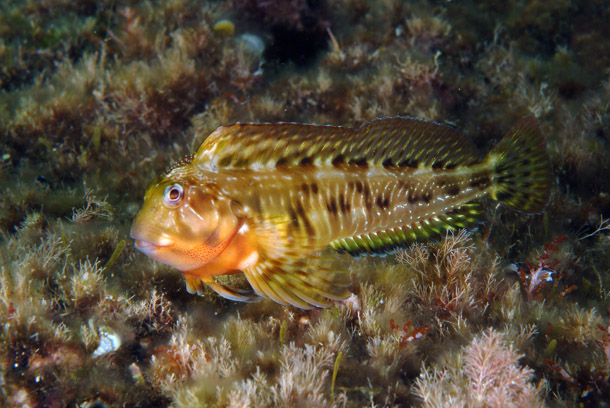How to spot the Blenny when scuba diving
Blenniidae
Over 300 species found worldwide in tropical, subtropical, and temperate waters. Highest diversity in the Indo-Pacific region. Different species have varying specific ranges, with some having very limited distribution while others are widespread.
Present year-round in their habitats. Most species are diurnal (day-active), making them observable during regular day dives. Some species may retreat into hiding spots during stronger currents or at night.
Found across a wide temperature range from cool temperate to tropical waters (10-30°C / 50-86°F), depending on species and location.
Typically found in shallow waters from intertidal zones down to about 40m. Most species are bottom-dwellers that shelter in small holes, crevices, abandoned worm tubes, or between rocks. Look for their characteristic heads poking out of small holes, often with distinctive eyes set high on their head. Some (like the Sailfin Blenny) perform entertaining displays. Macro photography subjects found worldwide, with particular diversity in muck diving destinations like Lembeh Strait (Indonesia), Anilao (Philippines), and Mabul (Malaysia). Patience and slow movements are key to observing their interesting behaviors.
Hey, planning your next dive trip?
Start logging your dives on Depthlog! You will regret not starting sooner 😉
for free!
Worldwide observation of the Blenniidae
Pan around to see all the observations
Data sources
- Photos: Wikimedia Commons
- Distribution and specie data: GBIF (Global Biodiversity Information Facility)
Click to explore other marine creatures, their distribution and the guide on how to spot them.
Still on dry land? Join fellow dive enthusiasts who've already discovered the easiest way to track their underwater adventures and their diving analytics!

